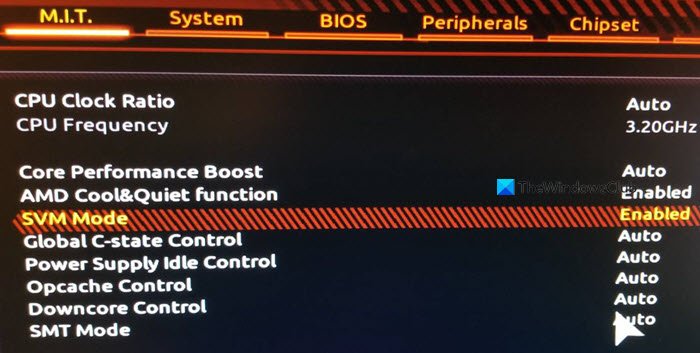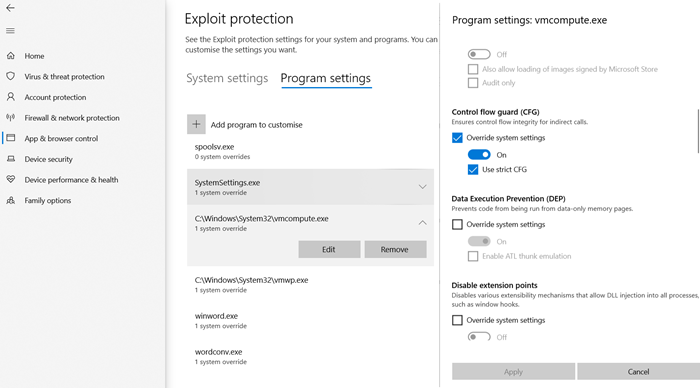If you have enabled Hypervisor Platform (Hyper-V) using the Windows Features section, and the computer doesn’t boot after a reboot as requested by the setup process, then this guide will help you. While it works most of the time, users have reported BSOD and are not able to boot into Windows. This post will guide you on how you can resolve the problem and get back the access.

Why does the problem occur?
With SVM (Secure Virtual Machine) enabled, you should be able to install a virtual machine on your system.
The problem occurs when there is a conflict between Windows Hypervisor and the current Windows version. The only way to solve this is by updating the drivers which are required by it. Make sure the Windows is updated to the recent version.
Windows does not Boot after Hypervisor Platform is Enabled
Since it is clear that you are unable to boot into Windows, the only way is to disable the Hypervisor Platform by using the Advanced Recovery method. The process will allow you to boot into the recovery and then use the command-line tool to disable it. Once done, you should be able to boot into Windows as usual.
- Boot into Advanced Recovery Mode using a bootable USB drive
- Select Troubleshoot > Advanced Options > Command Prompt
- Type
BCDedit /set hypervisorlaunchtype Offand press the Enter key - This will turn off the Hypervisor Platform
Reboot the computer, and the problem should be fixed. It would be best to reboot the computer multiple times to make sure it’s completely resolved.
Are you able to boot into Windows?
At times it may so happen that a boot becomes successful. In that case, we would recommend to Overwrite Control Flow Guard (CFG) Settings in Windows Security.

- Open Window Security > App & Browser control
- Click Exploit protection settings” at the bottom, and switch to Program settings.
- Locate “vmcompute.exe” in the list, and then select it. Then click on the Edit button.
- Locate Control Flow Guard (CFG) and uncheck Override system settings
- Reboot, and it should work fine henceforth.
Disable Hypervisor from UEFI
If your computer offers UEFI, you can use Advanced Recovery to disable HyperV settings from UEFI.
- Once into the recovery, go to Advanced Options.
- Then select UEFI Firmware Settings to reboot into the BIOS.
- Here you will need to locate the Virtualization Support section and disable HyperV at the hardware level.
- Since it’s disabled at the hardware level, you will not face the problem.
I hope the post was easy to follow, and that one of the solutions helped you resolve it. It is usually the compatibility between the Windows and the HyperV version.